
CNN
—
Brazil’s bright yellow jersey is a symbol that unites the country through a love of football and national pride, but over the past two years the shirt’s adoption by right wing supporters of Jair Bolsonaro, who wear it at protests and rallies to show their political allegiance to the Brazilian president, is causing controversy.
That famous yellow jersey was burnt into the imagination of a global audience in the 1970 World Cup. Inspired by the spelbinding performances of Pelé – he wore the number 10 jersey – the yellow shirt has represented Brazil’s success on the pitch and created a positive image worldwide for the past five decades.
That 1970 national team also became embroiled in politics, notably ahead of the World Cup in Mexico when General Medici, the president of a nation under military dictatorship, played a key role in the removal of the coach – Joao Saldanha – who had overseen a perfect qualification campaign.
Fast forward to 2020 and critics of Bolsonaro say the iconic yellow jersey has now become tainted by its close association to the Brazilian president.
Walter Casagrande, a former footballer for the Brazilian national team and the São Paulo club Corinthians, remembers the feeling of scoring a goal while wearing the yellow jersey in his first match with the “selecao” in 1985.
“It was a magical thing,” Casagrande told CNN Sport, “like an enchanted object that gave me huge emotion.”
Casagrande’s sentiments lie on the left side of the political chasm separating Bolsonaro’s supporters and opponents, and he feels an item he cherishes is being misrepresented.
“Now I consider the Brazilian yellow jersey to have been kidnapped and appropriated by the right wing, so we cannot use it.”
Casagrande said that for him the power of the yellow shirt used to be that it represented democracy and freedom.
“Brazil is appearing horribly to the world right now,” he said. “It’s the first time in my life I’m seeing the yellow jersey being used against democracy and freedom.”
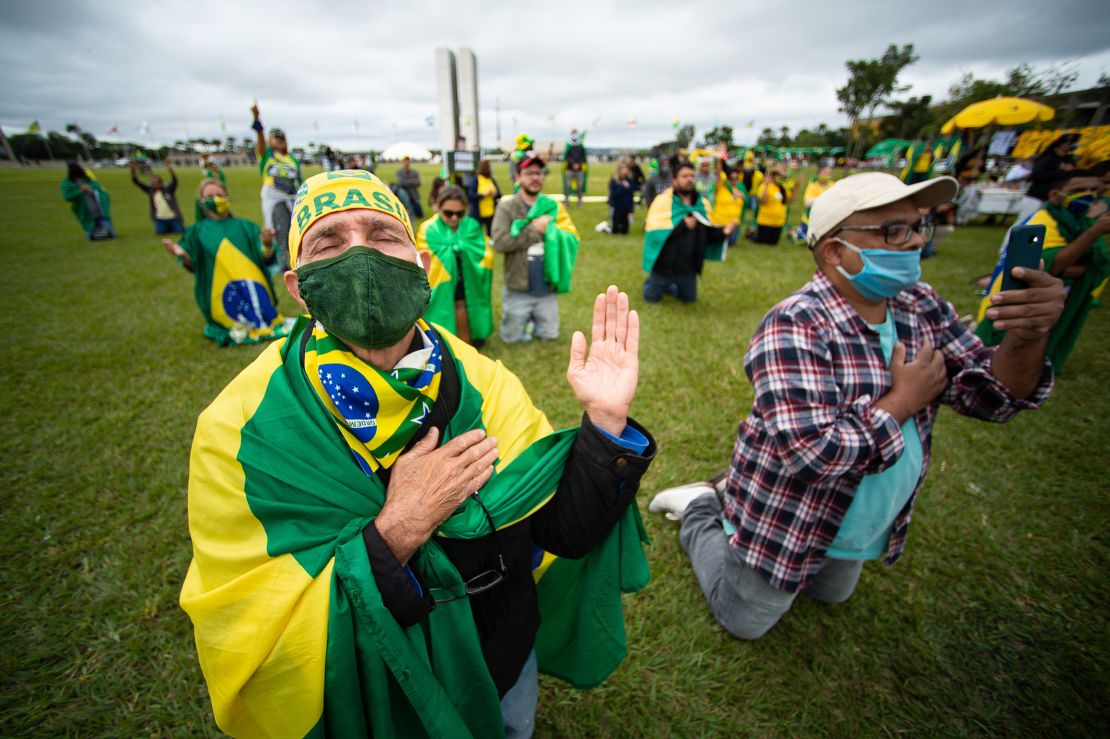
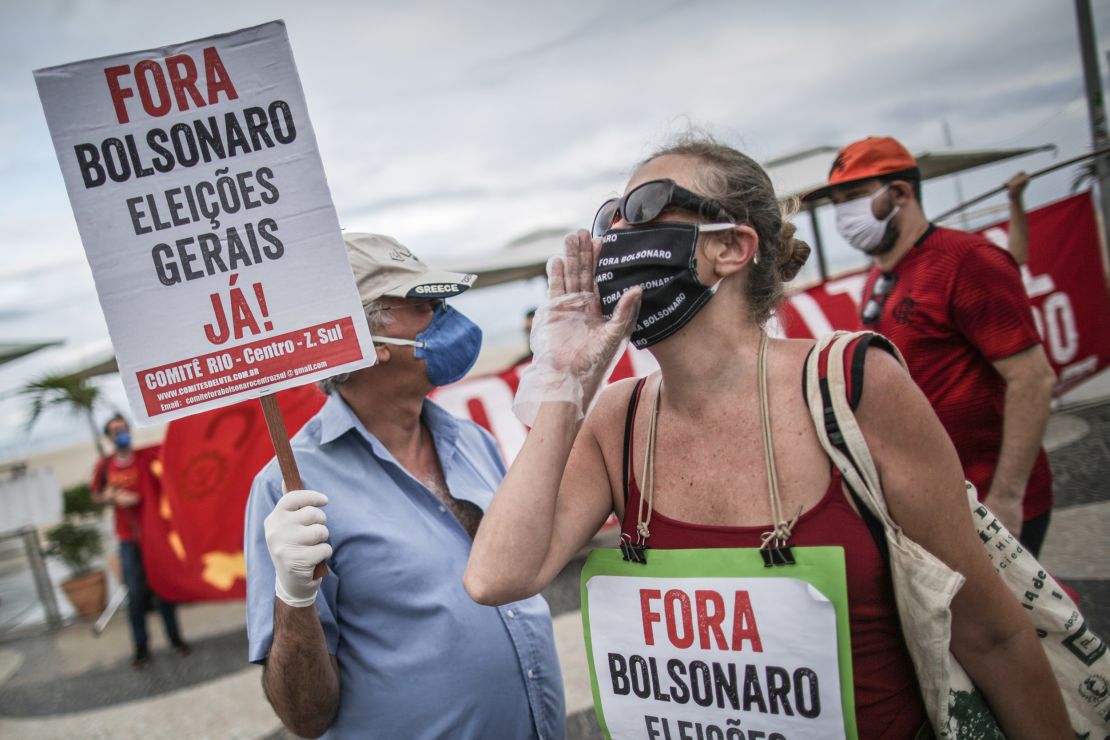
READ: 50 years on, 1970 World Cup-winning team remains Brazil’s greatest ever
As quick as the left is to criticize Bolsonaro, his supporters aren’t slow to counter punch.
Cosmo Alexandre, a Brazilian fighter who holds multiple world titles for Muay Thai and Kickboxing believes the left is conflating their many issues with Bolsonaro, and using the jersey as just another way to air grievances.
As a Bolsonaro supporter, Alexandre brushes off accusations that the jersey’s symbolism is being manipulated, and says the reason for supporters to wear a yellow t-shirt is simple: everyone in Brazil has a yellow t-shirt.
He points out that supporters don’t always wear the Brazilian team jersey specifically, and rallies are full of people wearing yellow t-shirts of all kinds.
Alexandre says there is a separation between the jersey’s sporting reputation and associations from what it politically represents.
“Around the world everybody knows about the Brazilian soccer team, so even if I go to a fight and I use the yellow soccer team shirt, everyone knows it’s Brazil,” he said. “So it’s not about politics – it’s just that the world knows about soccer in Brazil.”
It may be easier for some than others to isolate football and politics in a country where football is God.
Josemar de Rezende Jr. is a football fan who co-founded a Bolsonaro volunteer group in his city before the election. He said he’s proud of the Brazilian team’s global reputation for winning, and to him the yellow jersey “means love for the country, leadership, achievement and pride.”
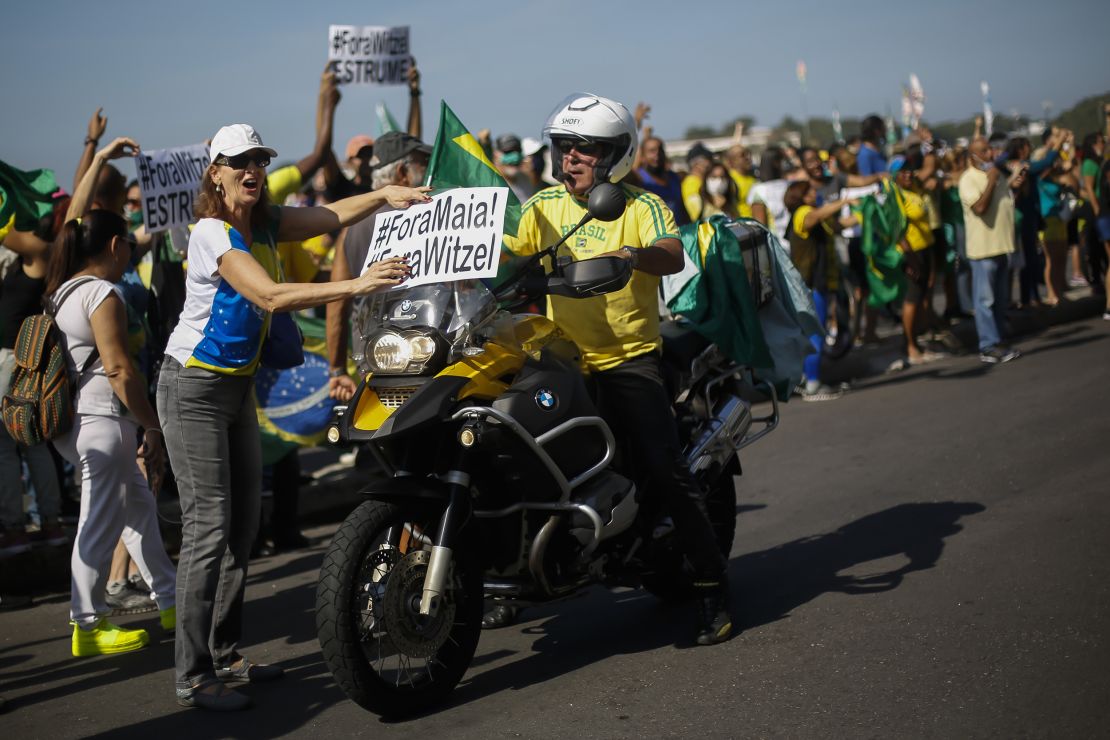
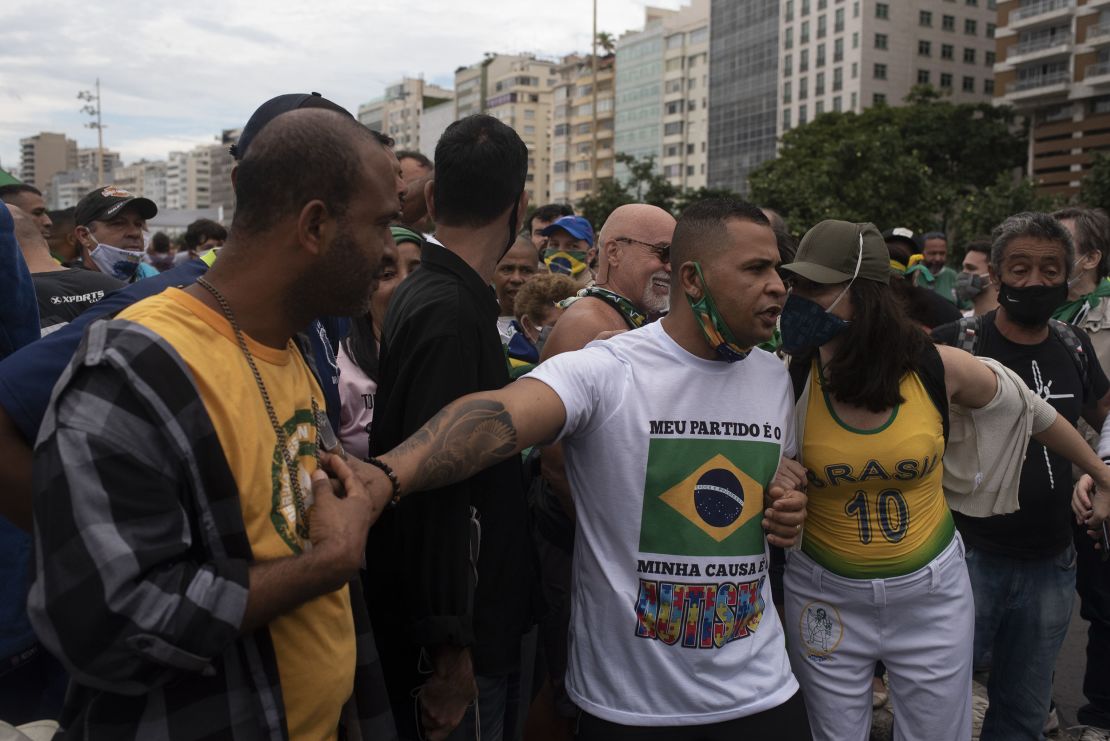
READ: The mystery of the 1998 World Cup final
White and blue kit campaign
Nonetheless, the subject of the yellow jersey has become so divisive that a campaign is underway for Brazil to play in a white shirt.
João Carlos Assumpção, a Brazilian journalist, filmmaker and author of “Gods of Soccer,” a book about the political, sociological and economic history of Brazil, is leading a campaign for the Brazilian Football Confederation (CBF) to abandon the yellow jersey altogether and go back to the classic white and blue kit from when the program started in 1914.
CNN reached out to the CBF who responded that they choose not to comment on this matter, “as it is a very unique issue.”
“People used to love Brazilian soccer because we used to play very well,” Assumpção said, “and if we play well with the white shirt in 2022 I think everybody’s going to buy a white shirt. It’s going to be very difficult to change, but I think it’s not impossible.”


The white and blue jersey was deemed unlucky when Brazil lost the World Cup at home to Uruguay in 1950 so they switched to the yellow jersey, and won five World Cups wearing it – a finals record that still stands today.
Assumpção’s vision for changing the color of the kit is to say to the world that Brazilians want change in the country. “Not the changes that this government is doing,” Assumpção clarified.
On the other side of the political spectrum, the color yellow, including the yellow jersey, represents a positive change in the country. Bolsonaro supporter Rezende Jr. believes the attempt by the left to reclaim the yellow jersey is an effort to “mischaracterize the government,” which he describes as a “patriotic government that represents and has support from all social classes throughout the nation.”
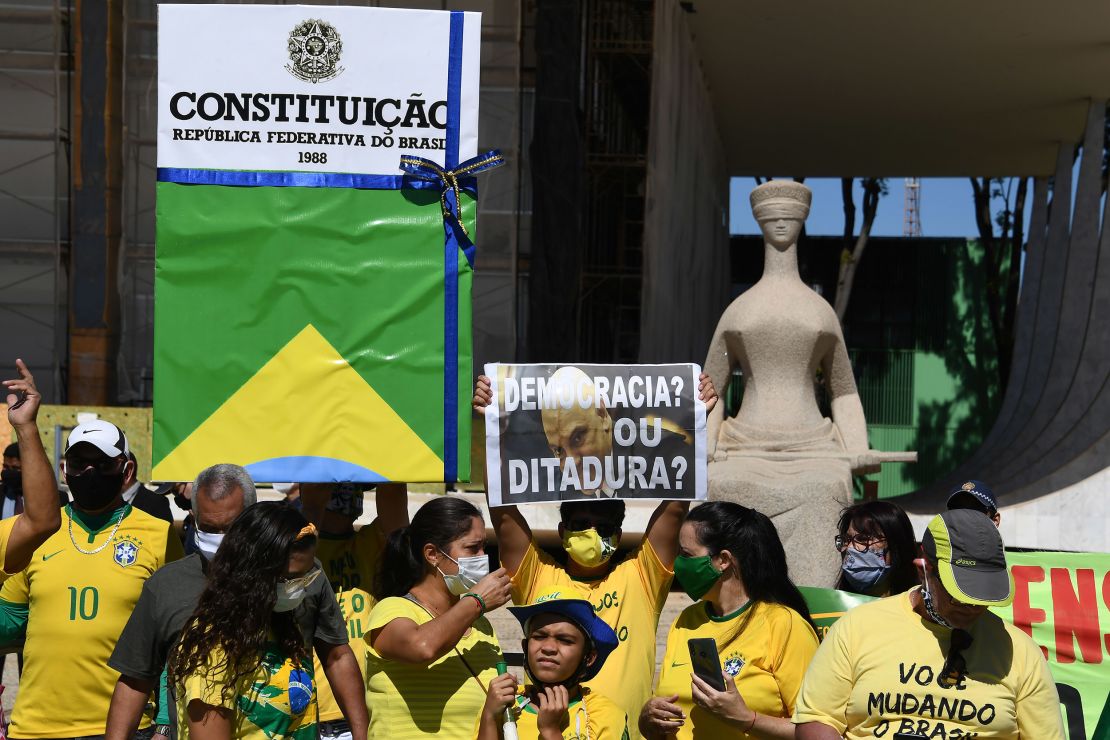
READ: A pig’s head and riot police: Football’s most controversial transfer
Political turmoil in the country mirrors the fierceness between inter-city football rivalries all across Brazil. Except it is not contained by city boundaries and in recent months has brought fans together.
São Paulo is home to four main clubs: Corinthians, Palmeiras, São Paolo, and Santos. The rivalry between Corinthians and Palmeiras is especially intense, and in June groups from each club joined together in the streets to counter-protest Bolsonaro’s supporters.
Sociologist Rafael Castilho, a Member of the Collective Corinthian Democracy and Coordinator of the Corinthians Study Center said that for Brazil to overcome the current political situation, it will have to “unite different ways of thinking and accept the contradictory.”
Castilho explains the civic responsibility rival clubs feel to support each other and join with civil society movements, “as the country experiences a crisis of party representation and social movements have been intimidated by police action,” he said, adding that “the attitude of fans has gained sympathy because part of society feels represented by the courage of the fans.”
The Corinthians have a history of mixing football and politics. In the 1980s during the pro-democracy movement called Diretas Já, the club team was led by national team leaders Socrates and Casagrande.
The two intertwined football with politics when the team wore jerseys during a game in 1982 displaying the words “VOTE on 15th,” in an effort to motivate their fans to vote in the São Paulo state government election.
Two years later the Corinthians were the center of a movement called Democracia Corintiana, which Casagrande said put more than one million people in the streets dressed in yellow.
“It was a very important moment for Brazilian democracy, and this yellow jersey was central to that movement,” Casagrande said.

Pelé and who else? Dante’s top 3 Brazilians
The yellow jersey was back on the streets in the 2013 protests against ex-President Dilma Roussef and against corruption. A year before the World Cup was to take place in the South American country, conservative protesters wore shirts that represented the colors of Brazil, while leftist protesters used other colors.
Alexandre and Rezende Jr. both say that yellow is an improvement from the red t-shirts government supporters used to wear when the left was in power, alluding to an underlying support of communism.
“When Bolsonaro started running, his supporters used the yellow color to show I’m Brazilian and I don’t want communism in my country,” Alexandre said.
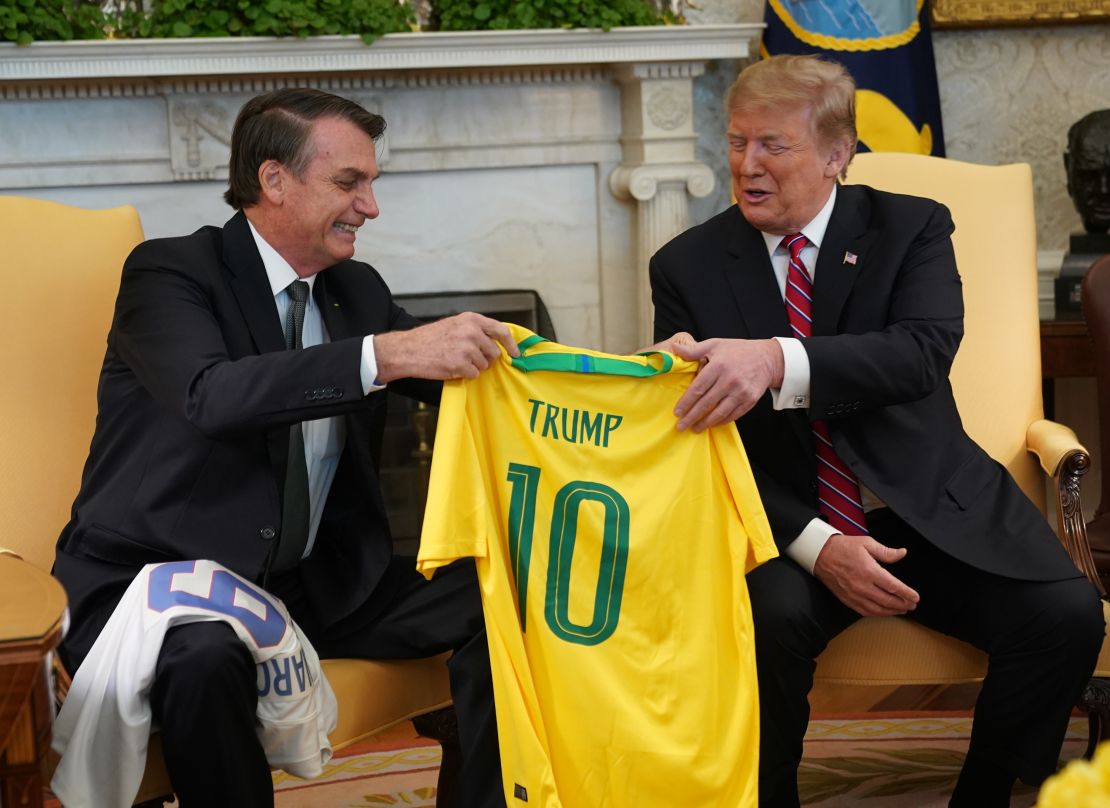
The fight for the yellow jersey leaves some longing to reclaim a victorious past, while others push forward to create new meaning for the iconic symbol. In a country so deeply rooted in football, it’s an issue that’s unlikely to go away.
Assumpção thinks it’s only possible for the football community and Brazilians not associated with the far right to recover the jersey “maybe in five years or 10, but not now. Not now.”





